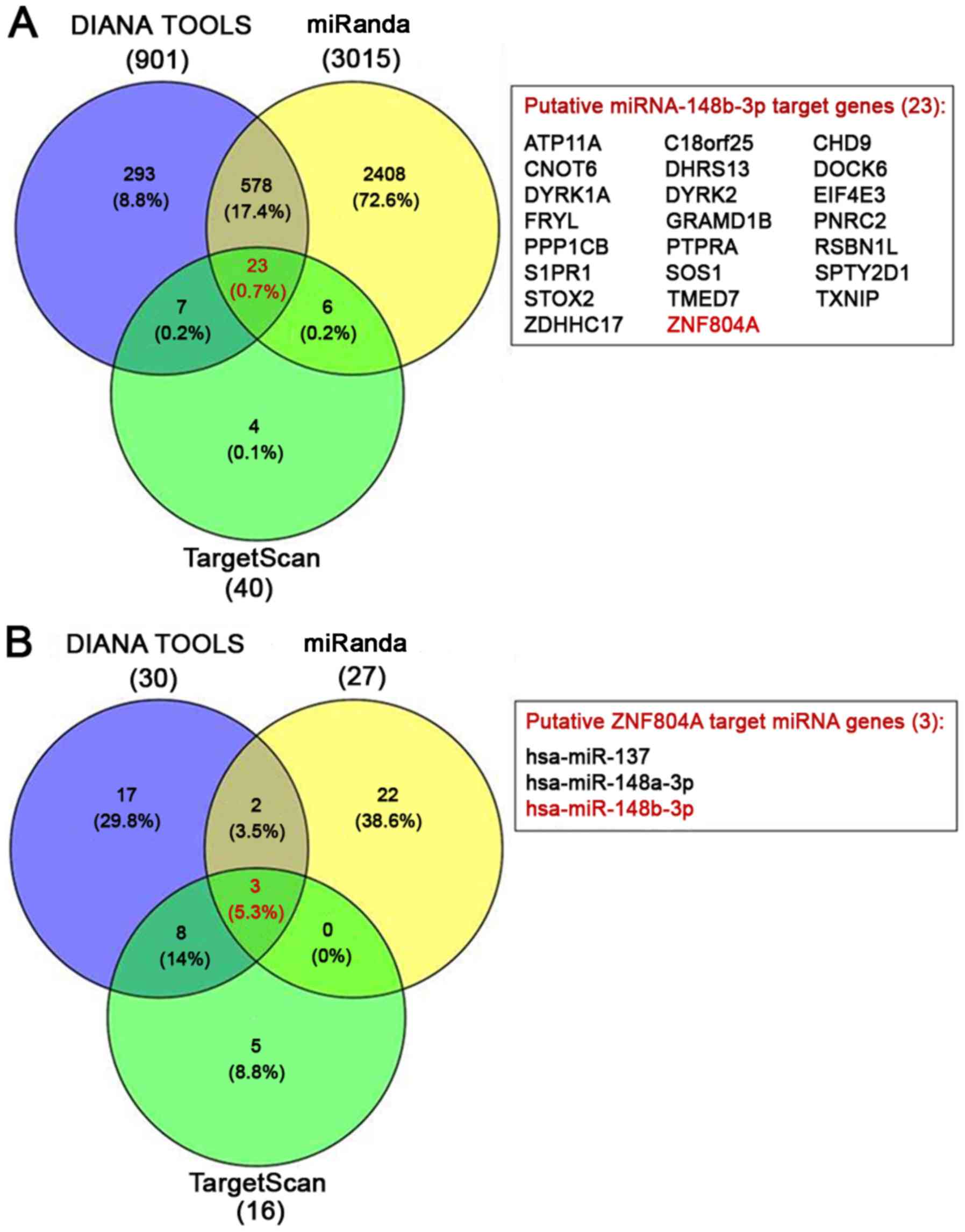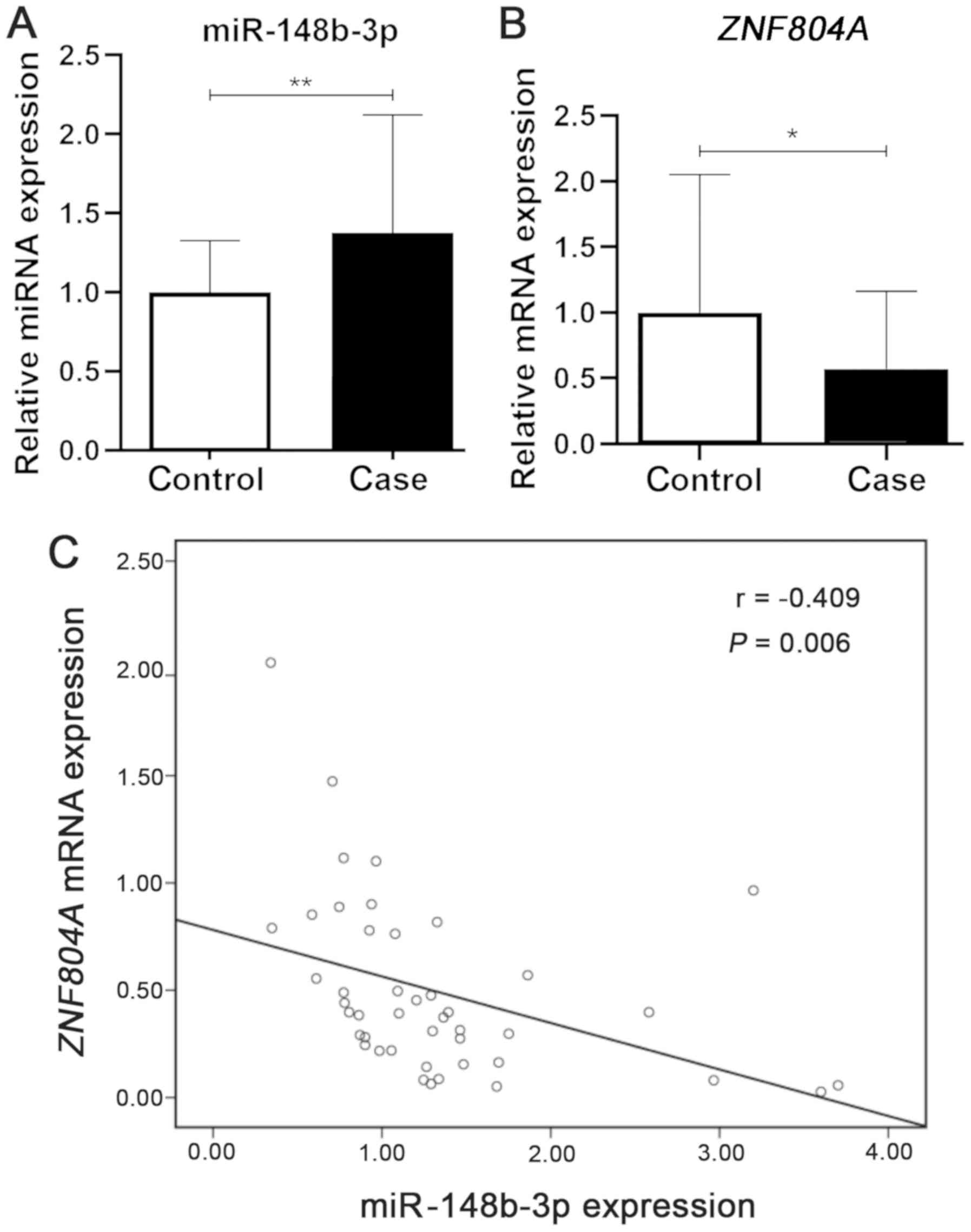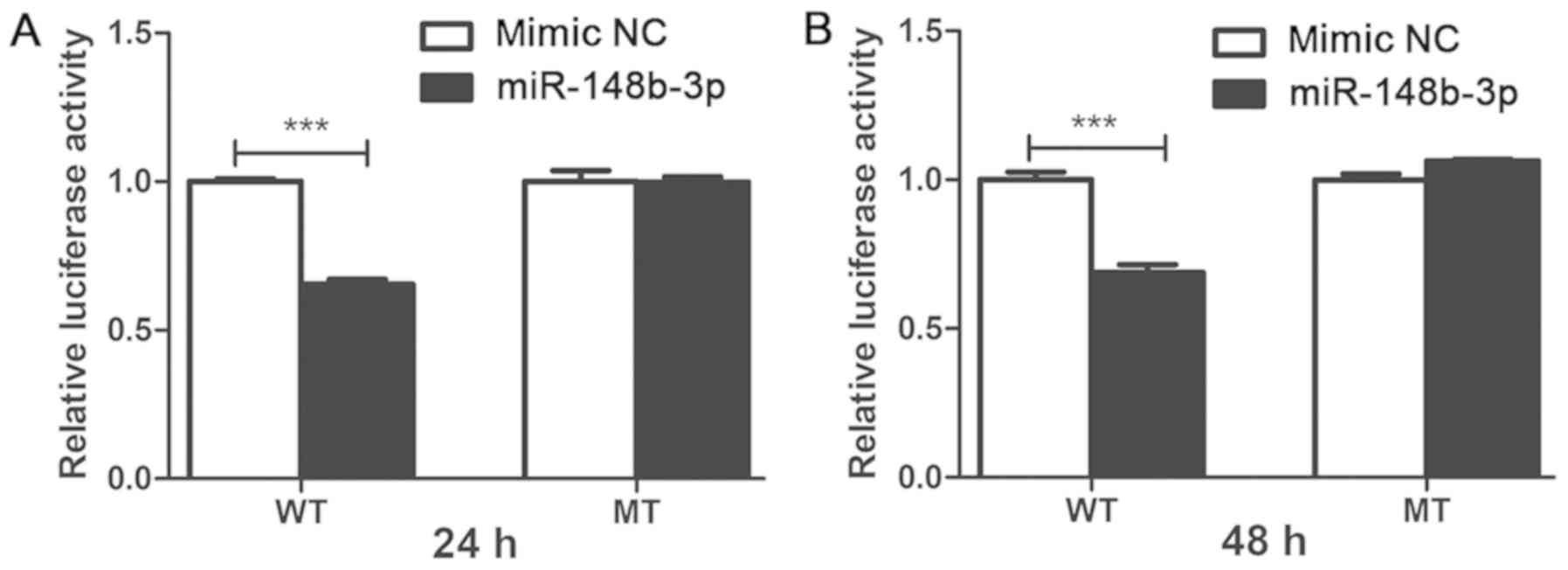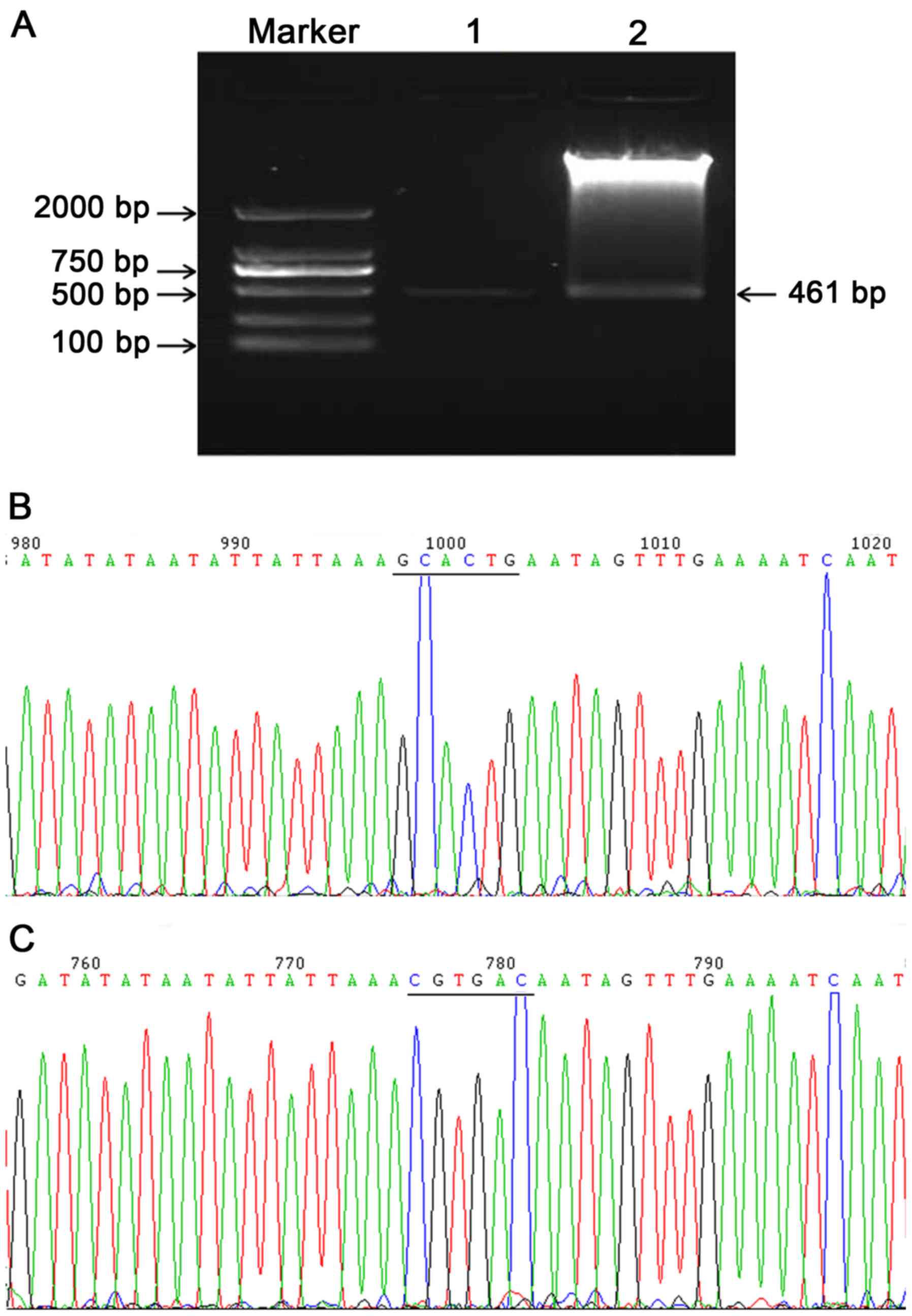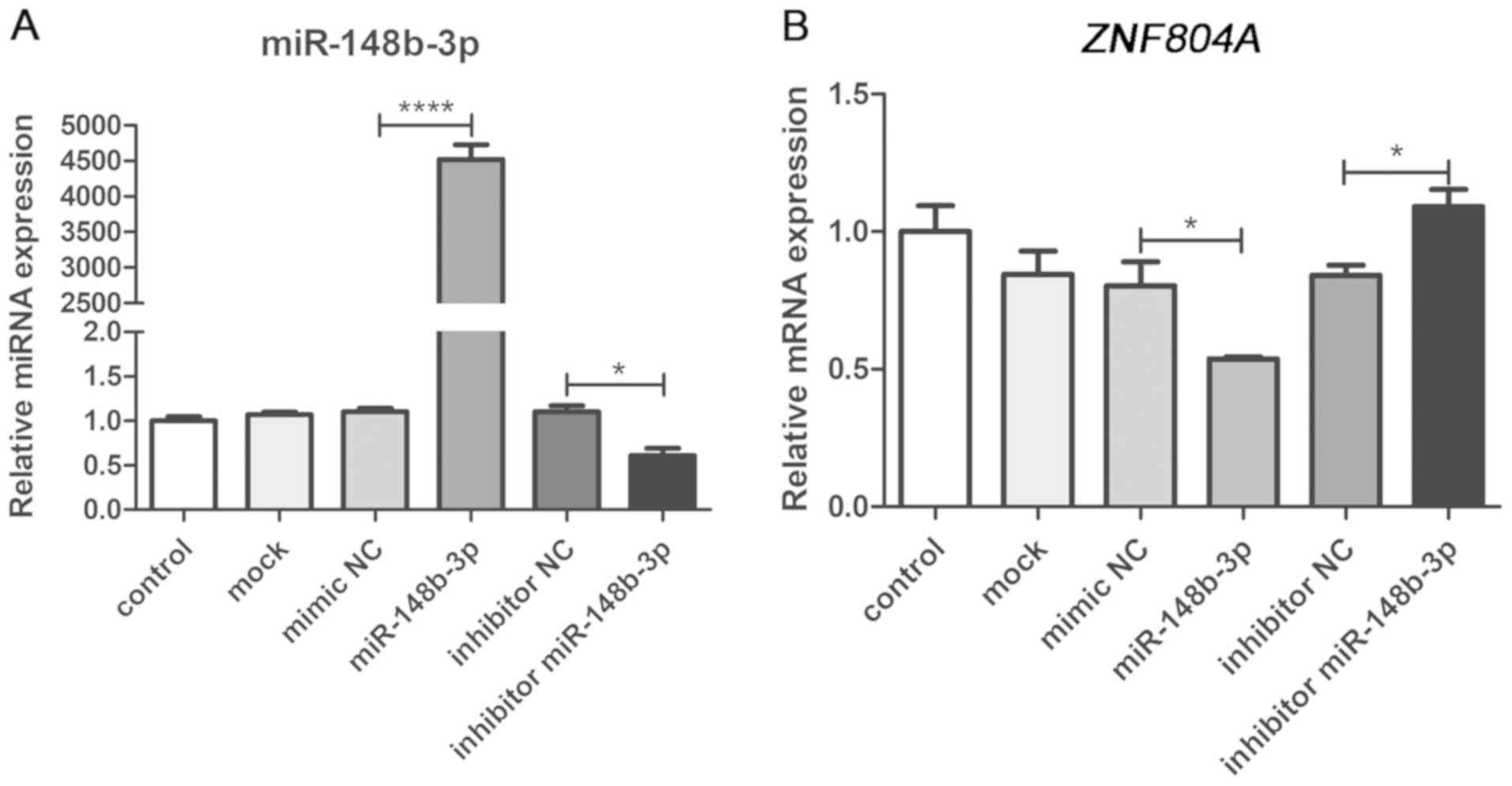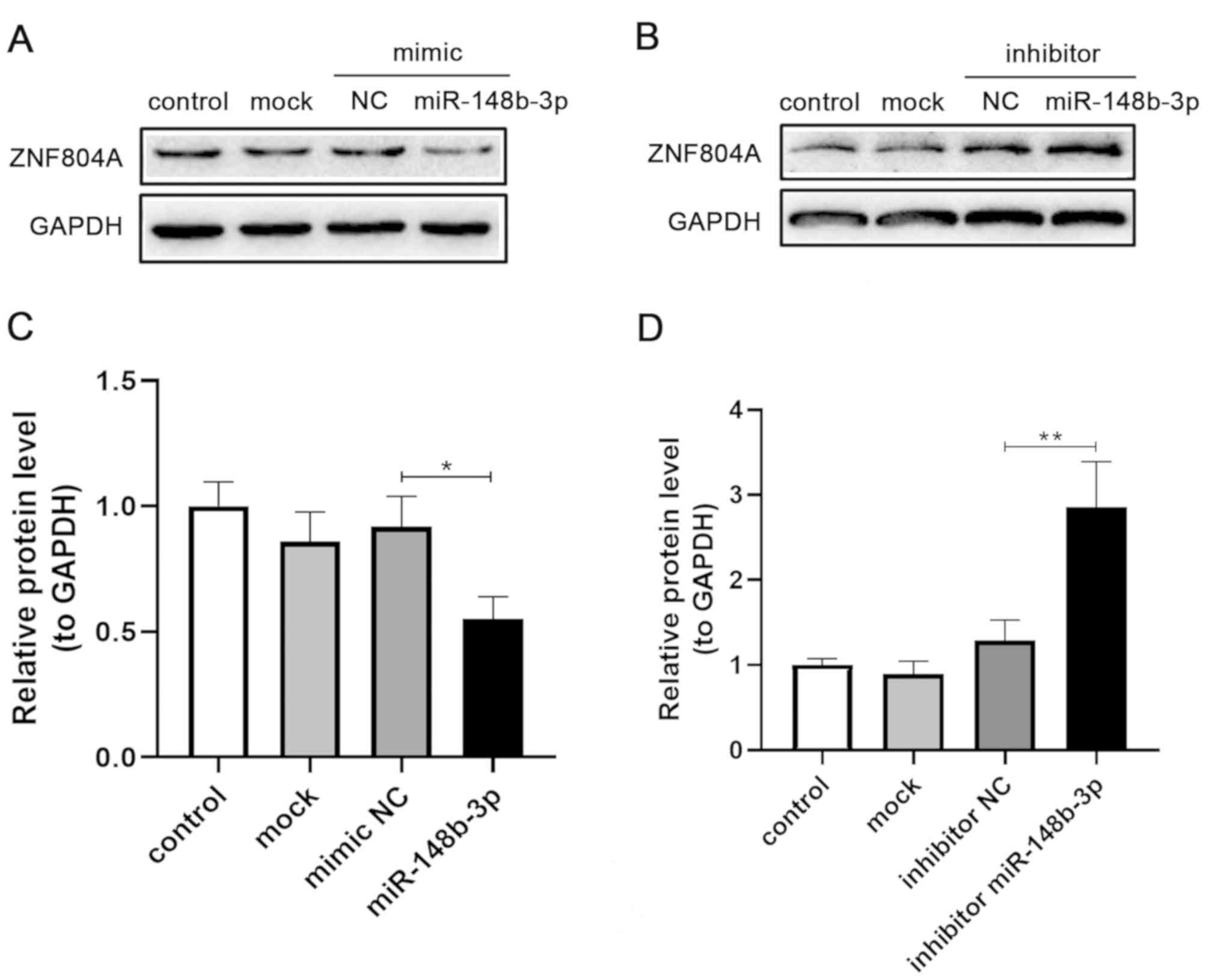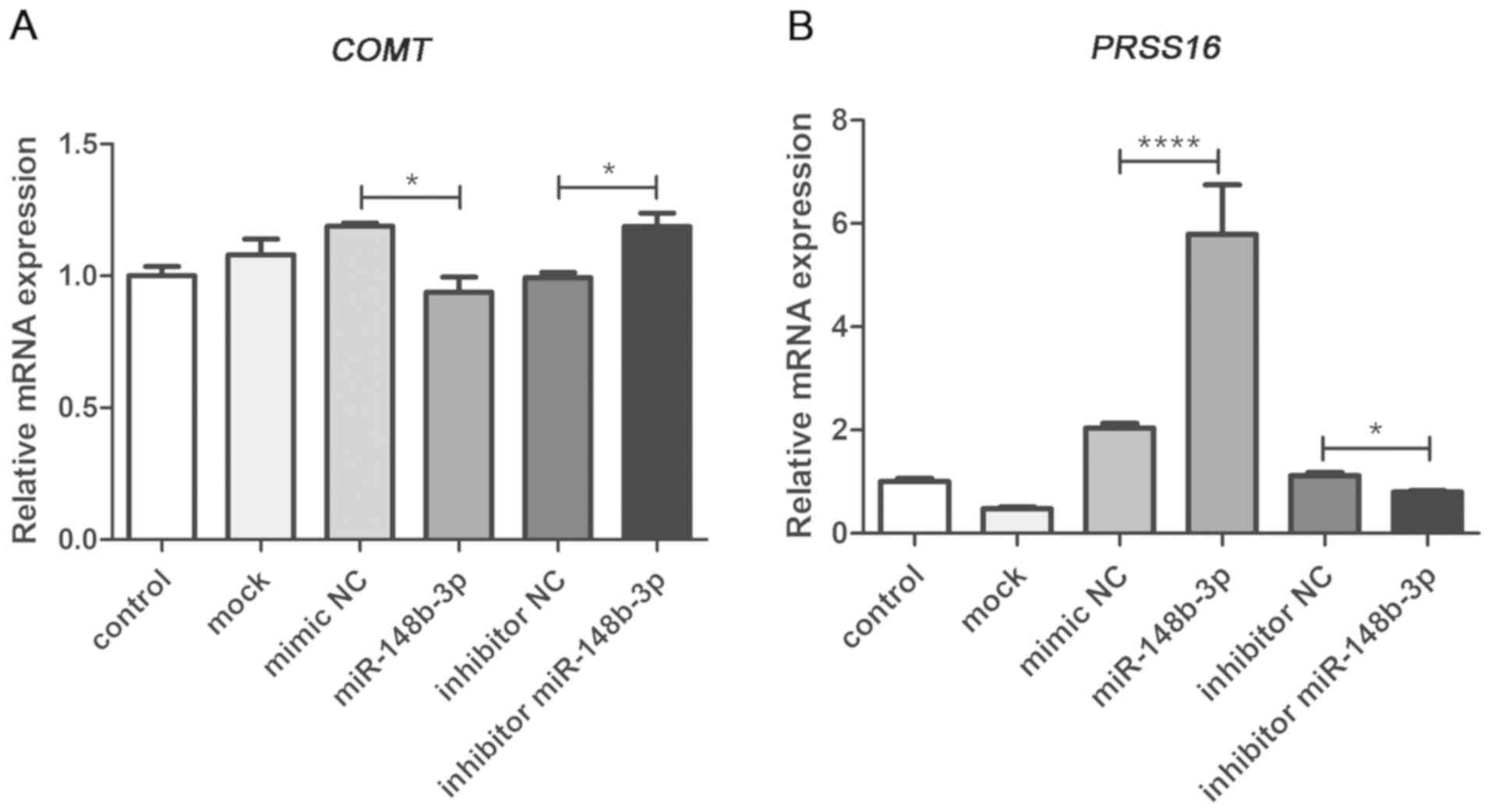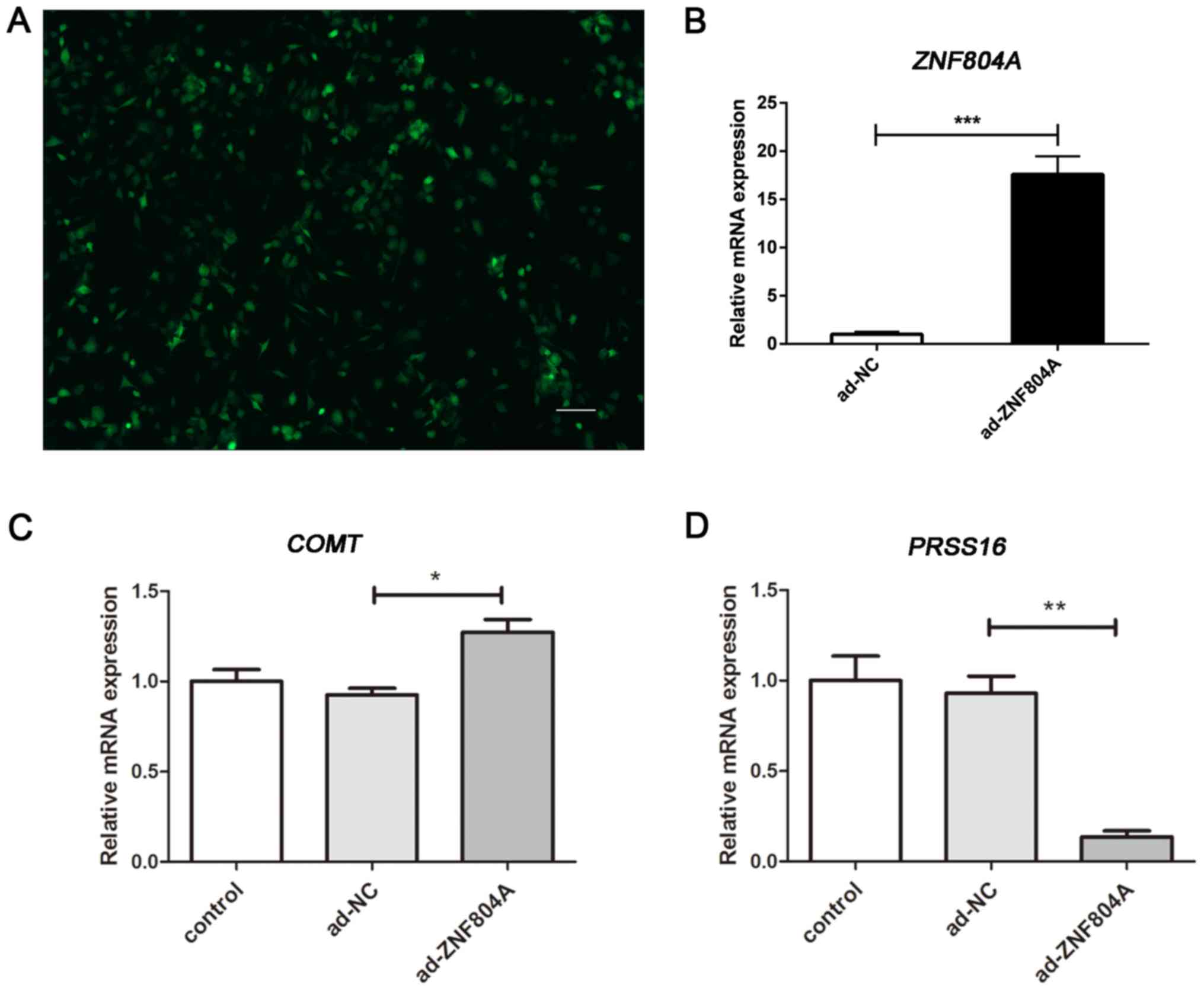|
1
|
Yue WH, Wang HF, Sun LD, Tang FL, Liu ZH,
Zhang HX, Li WQ, Zhang YL, Zhang Y, Ma CC, et al: Genome-wide
association study identifies a susceptibility locus for
schizophrenia in Han Chinese at 11p11. 2. Nat Genet. 43:1228–1231.
2011. View
Article : Google Scholar : PubMed/NCBI
|
|
2
|
Schizophrenia Working Group of the
Psychiatric Genomics Consortium, . Biological insights from 108
schizophrenia-associated genetic loci. Nature. 511:421–427. 2014.
View Article : Google Scholar : PubMed/NCBI
|
|
3
|
Misiak B, Stramecki F, Gawęda Ł, Prochwicz
K, Sąsiadek MM, Moustafa AA and Frydecka D: Interactions between
variation in candidate genes and environmental factors in the
etiology of schizophrenia and bipolar disorder: A systematic
review. Mol Neurobiol. 55:5075–5100. 2018. View Article : Google Scholar : PubMed/NCBI
|
|
4
|
O'donovan MC, Craddock N, Norton N,
Williams H, Peirce T, Moskvina V, Nikolov I, Hamshere M, Carroll L,
Georgieva L, et al: Identification of loci associated with
schizophrenia by genome-wide association and follow-up. Nat Genet.
40:1053–1055. 2008. View
Article : Google Scholar : PubMed/NCBI
|
|
5
|
Harrison PJ: ZNF804A: Insights from the
first genome-wide significant schizophrenia gene. Biol Psychiatry.
82:6–7. 2017. View Article : Google Scholar : PubMed/NCBI
|
|
6
|
Williams HJ, Norton N, Dwyer S, Moskvina
V, Nikolov I, Carroll L, Georgieva L, Williams NM, Morris DW, Quinn
EM, et al: Fine mapping of ZNF804A and genome-wide significant
evidence for its involvement in schizophrenia and bipolar disorder.
Mol Psychiatry. 16:429–441. 2011. View Article : Google Scholar : PubMed/NCBI
|
|
7
|
Girgenti MJ, LoTurco JJ and Maher BJ:
ZNF804a regulates expression of the schizophrenia-associated genes
PRSS16, COMT, PDE4B, and DRD2. PLoS One. 7:e324042012. View Article : Google Scholar : PubMed/NCBI
|
|
8
|
Milanesi E, Maj C, Bocchio-Chiavetto L and
Maffioletti E: Nanomedicine in psychiatry: New therapeutic
opportunities from research on small RNAs. Drug Dev Res.
77:453–457. 2016. View Article : Google Scholar : PubMed/NCBI
|
|
9
|
Schizophrenia Psychiatric Genome-Wide
Association Study (GWAS) Consortium, . Genome-wide association
study identifies five new schizophrenia loci. Nat Genet.
43:969–976. 2011. View
Article : Google Scholar : PubMed/NCBI
|
|
10
|
Siegert S, Seo J, Kwon EJ, Rudenko A, Cho
S, Wang W, Flood Z, Martorell AJ, Ericsson M, Mungenast AE and Tsai
LH: The schizophrenia risk gene product miR-137 alters presynaptic
plasticity. Nat Neurosci. 18:1008–1016. 2015. View Article : Google Scholar : PubMed/NCBI
|
|
11
|
Wu S, Zhang R, Nie F, Wang X, Jiang C, Liu
M, Valenzuela RK, Liu W, Shi Y and Ma J: MicroRNA-137 inhibits
EFNB2 expression affected by a genetic variant and is expressed
aberrantly in peripheral blood of schizophrenia patients.
EBioMedicine. 12:133–142. 2016. View Article : Google Scholar : PubMed/NCBI
|
|
12
|
D'Souza UM, Russ C, Tahir E, Mill J,
McGuffin P, Asherson PJ and Craig IW: Functional effects of a
tandem duplication polymorphism in the 5′flanking region of the
DRD4 gene. Biol Psychiatry. 56:691–697. 2004. View Article : Google Scholar : PubMed/NCBI
|
|
13
|
Warburton A, Breen G, Rujescu D, Bubb VJ
and Quinn JP: Characterization of a REST-regulated internal
promoter in the schizophrenia genome-wide associated gene MIR137.
Schizophr Bull. 41:698–707. 2015. View Article : Google Scholar : PubMed/NCBI
|
|
14
|
O'Brien NL, Fiorentino A, Curtis D, Rayner
C, Petrosellini C, Al Eissa M, Bass NJ, McQuillin A and Sharp SI:
Rare variant analysis in multiply affected families, association
studies and functional analysis suggest a role for the ITGBeta4
gene in schizophrenia and bipolar disorder. Schizophr Res.
199:181–188. 2018. View Article : Google Scholar : PubMed/NCBI
|
|
15
|
Yuan JS, Reed A, Chen F and Stewart CN Jr:
Statistical analysis of real-time PCR data. BMC Bioinformatics.
7:852006. View Article : Google Scholar : PubMed/NCBI
|
|
16
|
Lewis BP, Burge CB and Bartel DP:
Conserved seed pairing, often flanked by adenosines, indicates that
thousands of human genes are microRNA targets. Cell. 120:15–20.
2005. View Article : Google Scholar : PubMed/NCBI
|
|
17
|
Chang TC and Mendell JT: MicroRNAs in
vertebrate physiology and human disease. Annu Rev Genomics Hum
Genet. 8:215–239. 2007. View Article : Google Scholar : PubMed/NCBI
|
|
18
|
Guillin O, Abi-Dargham A and Laruelle M:
Neurobiology of dopamine in schizophrenia. Int Rev Neurobiol.
78:1–39. 2007. View Article : Google Scholar : PubMed/NCBI
|
|
19
|
Li B, Chen R, Chen L, Qiu P, Ai X, Huang
E, Huang W, Chen C, Liu C, Lin Z, et al: Effects of DDIT4 in
methamphetamine-induced autophagy and apoptosis in dopaminergic
neurons. Mol Neurobiol. 54:1642–1660. 2017. View Article : Google Scholar : PubMed/NCBI
|
|
20
|
Korecka JA, van Kesteren RE, Blaas E,
Spitzer SO, Kamstra JH, Smit AB, Swaab DF, Verhaagen J and Bossers
K: Phenotypic characterization of retinoic acid differentiated
SH-SY5Y cells by transcriptional profiling. PLoS One. 8:e638622013.
View Article : Google Scholar : PubMed/NCBI
|
|
21
|
Xie HR, Hu LS and Li GY: SH-SY5Y human
neuroblastoma cell line: In vitro cell model of dopaminergic
neurons in Parkinson's disease. Chin Med J (Engl). 123:1086–1092.
2010.PubMed/NCBI
|
|
22
|
Chen Y, Song YX and Wang ZN: The
microRNA-148/152 family: Multi-faceted players. Mol Cancer.
12:432013. View Article : Google Scholar : PubMed/NCBI
|
|
23
|
Santarelli DM, Beveridge NJ, Tooney PA and
Cairns MJ: Upregulation of dicer and microRNA expression in the
dorsolateral prefrontal cortex Brodmann area 46 in schizophrenia.
Biol Psychiatry. 69:180–187. 2011. View Article : Google Scholar : PubMed/NCBI
|
|
24
|
Wang J, Chen T and Shan G: miR-148b
regulates proliferation and differentiation of neural stem cells
via Wnt/β-catenin signaling in rat ischemic stroke model. Front
Cell Neurosci. 11:3292017. View Article : Google Scholar : PubMed/NCBI
|
|
25
|
Deans PJM, Raval P, Sellers KJ, Gatford
NJF, Halai S, Duarte RRR, Shum C, Warre-Cornish K, Kaplun VE, Cocks
G, et al: Psychosis risk candidate ZNF804A localizes to synapses
and regulates neurite formation and dendritic spine structure. Biol
Psychiatry. 82:49–61. 2017. View Article : Google Scholar : PubMed/NCBI
|
|
26
|
Zhou Y, Dong F, Lanz TA, Reinhart V, Li M,
Liu L, Zou J, Xi HS and Mao Y: Interactome analysis reveals
ZNF804A, a schizophrenia risk gene, as a novel component of protein
translational machinery critical for embryonic neurodevelopment.
Mol Psychiatry. 23:952–962. 2018. View Article : Google Scholar : PubMed/NCBI
|
|
27
|
Chen J, Lipska BK, Halim N, Ma QD,
Matsumoto M, Melhem S, Kolachana BS, Hyde TM, Herman MM, Apud J, et
al: Functional analysis of genetic variation in
catechol-O-methyltransferase (COMT): Effects on mRNA, protein, and
enzyme activity in postmortem human brain. Am J Hum Genet.
75:807–821. 2004. View
Article : Google Scholar : PubMed/NCBI
|
|
28
|
Levite M: Dopamine and T cells: Dopamine
receptors and potent effects on T cells, dopamine production in T
cells, and abnormalities in the dopaminergic system in T cells in
autoimmune, neurological and psychiatric diseases. Acta Physiol
(Oxf). 216:42–89. 2016. View Article : Google Scholar : PubMed/NCBI
|
|
29
|
Kiss LE and Soares-da-Silva P: Medicinal
chemistry of catechol O-methyltransferase (COMT) inhibitors and
their therapeutic utility. J Med Chem. 57:8692–8717. 2014.
View Article : Google Scholar : PubMed/NCBI
|
|
30
|
Antonova E, Kumari V, Morris R, Halari R,
Anilkumar A, Mehrotra R and Sharma T: The relationship of
structural alterations to cognitive deficits in schizophrenia: A
voxel-based morphometry study. Biol Psychiatry. 58:457–467. 2005.
View Article : Google Scholar : PubMed/NCBI
|
|
31
|
Gao S, Cheng J, Li G, Sun T, Xu Y, Wang Y,
Du X, Xu G and Duan S: Catechol-O-methyltransferase gene promoter
methylation as a peripheral biomarker in male schizophrenia. Eur
Psychiatry. 44:39–46. 2017. View Article : Google Scholar : PubMed/NCBI
|
|
32
|
Basu S and Dasgupta PS: Dopamine, a
neurotransmitter, influences the immune system. J Neuroimmunol.
102:113–124. 2000. View Article : Google Scholar : PubMed/NCBI
|
|
33
|
Egan MF, Goldberg TE, Kolachana BS,
Callicott JH, Mazzanti CM, Straub RE, Goldman D and Weinberger DR:
Effect of COMT Val108/158 Met genotype on frontal lobe function and
risk for schizophrenia. Proc Natl Acad Sci USA. 98:6917–6922. 2001.
View Article : Google Scholar : PubMed/NCBI
|
|
34
|
Kitazawa M, Ohnuma T, Takebayashi Y,
Shibata N, Baba H, Ohi K, Yasuda Y, Nakamura Y, Aleksic B, Yoshimi
A, et al: No associations found between the genes situated at 6p22.
1, HIST1H2BJ, PRSS16, and PGBD1 in Japanese patients diagnosed with
schizophrenia. Am J Med Genet B Neuropsychiatr Genet 159B. 456–464.
2012. View Article : Google Scholar
|
|
35
|
Stefansson H, Ophoff RA, Steinberg S,
Andreassen OA, Cichon S, Rujescu D, Werge T, Pietiläinen OP, Mors
O, Mortensen PB, et al: Common variants conferring risk of
schizophrenia. Nature. 460:744–747. 2009. View Article : Google Scholar : PubMed/NCBI
|
|
36
|
Harris LW, Pietsch S, Cheng TM, Schwarz E,
Guest PC and Bahn S: Comparison of peripheral and central
schizophrenia biomarker profiles. PLoS One. 7:e463682012.
View Article : Google Scholar : PubMed/NCBI
|
|
37
|
Ander BP, Barger N, Stamova B, Sharp FR
and Schumann CM: Atypical miRNA expression in temporal cortex
associated with dysregulation of immune, cell cycle, and other
pathways in autism spectrum disorders. Mol Autism. 6:372015.
View Article : Google Scholar : PubMed/NCBI
|
|
38
|
Chivet M, Javalet C, Laulagnier K, Blot B,
Hemming FJ and Sadoul R: Exosomes secreted by cortical neurons upon
glutamatergic synapse activation specifically interact with
neurons. J Extracell Vesicles. 3:247222014. View Article : Google Scholar : PubMed/NCBI
|
|
39
|
Glebov K, Löchner M, Jabs R, Lau T, Merkel
O, Schloss P, Steinhäuser C and Walter J: Serotonin stimulates
secretion of exosomes from microglia cells. Glia. 63:626–634. 2015.
View Article : Google Scholar : PubMed/NCBI
|
|
40
|
Wood MJ, O'Loughlin AJ and Samira L:
Exosomes and the blood-brain barrier: Implications for neurological
diseases. Ther Deliv. 2:1095–1099. 2011. View Article : Google Scholar : PubMed/NCBI
|
|
41
|
Ohno S and Kuroda M: Exosome-mediated
targeted delivery of miRNAs. Methods Mol Biol. 1448:261–270. 2016.
View Article : Google Scholar : PubMed/NCBI
|















